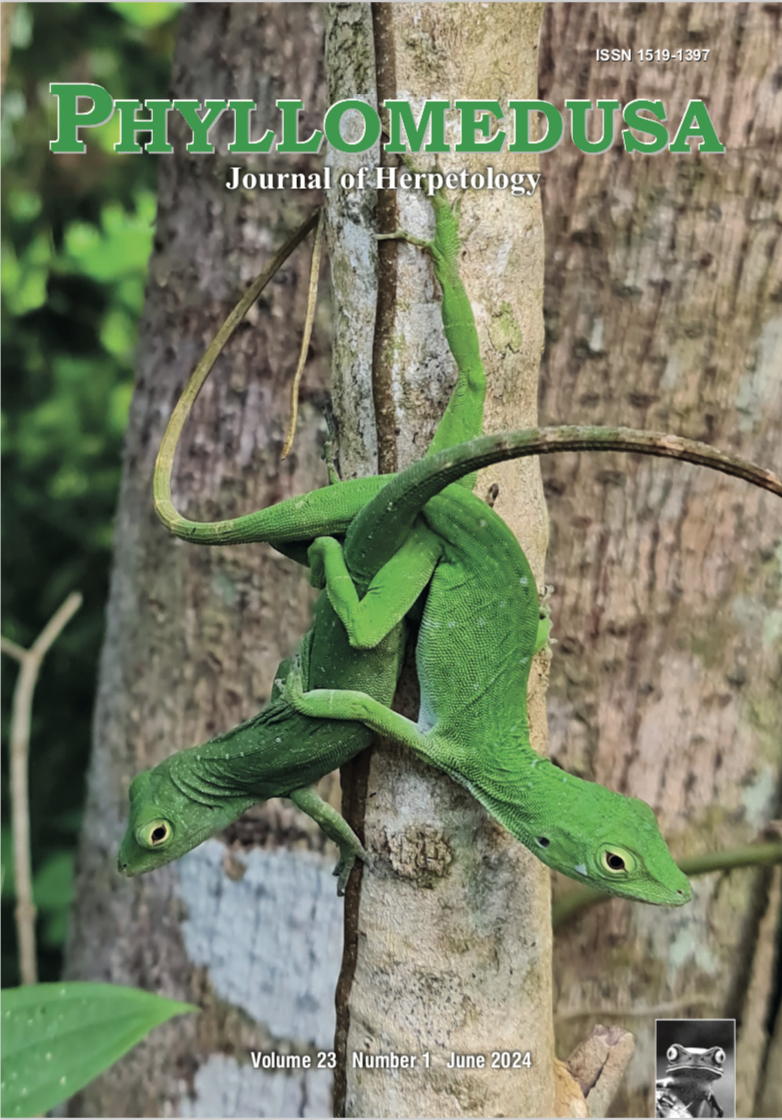Behavioral responses of tadpoles of Sphaerotheca breviceps (Dicroglossidae), Duttaphrynus melanostictus (Bufonidae), and Polypedates maculatus (Rhacophoridae) to kairomones and dietary cues of a rare insect predator, Ranatra elongata (Nepidae)
DOI:
https://doi.org/10.11606/issn.2316-9079.v23i1p55-64Keywords:
Anuran tadpoles, Chemoreception, Defense behavior, Predation threat, Predator-prey interactions, Reduced activity, Sit-and-wait predatorsAbstract
Tadpoles of three sympatric anuran species, Sphaerotheca breviceps, Duttaphrynus melanostictus, and Polypedates maculatus, use chemoreception to detect kairomonal cues and excretory metabolites from active predatory anuran tadpoles (Hoplobatrachus tigerinus) that consume them. Herein, we describe the behavioral responses of tadpoles of these three species to a rare sit-and-wait predatory insect, the nepid Ranatra elongata. The predator’s kairomones (water conditioned by a starved predator) or kairomones + diet-derived metabolites (dietary cues released in excreta of the predator after consumption of conspecific prey tadpoles) were used to simulate predation risk. Tadpoles of the three species had no behavioral responses to predator kairomones. However, all three species drastically reduced swimming movements and overall time spent swimming and had a higher burst speed/swimming velocity in response to water-borne cues released from the excreta of predators fed conspecific prey items. Because the presence of R. elongata does not elicit defense behaviors in tadpoles of these three prey species, additional information related to digestion of conspecifics is required to elicit defensive behaviors, suggesting that the presence of kairomones is not sufficient to elicit defense behavior.
Downloads
Downloads
Published
Issue
Section
License
Copyright (c) 2024 ESALQ-USP

This work is licensed under a Creative Commons Attribution-NonCommercial-NoDerivatives 4.0 International License.
All material originally published in Phyllomedusa belongs to Escola Superior de Agricultura Luiz de Queiroz - Universidade de São Paulo. All contents are under a license of Creative Commons BY-NC-ND.


 Impact Factor (JCR): 0.400
Impact Factor (JCR): 0.400 CiteScore: 1.0
CiteScore: 1.0